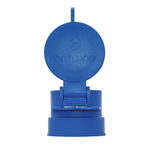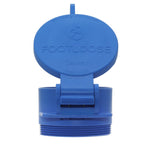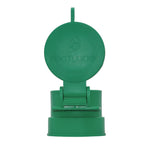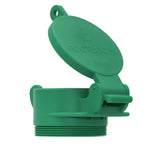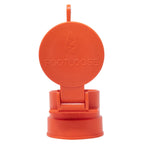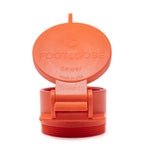You have no items in your shopping cart.
A catch basin plays a crucial part in protecting your home or business. Without one, you could have standing water in your yard or parking lot, dramatically increasing your risk of indoor flooding issues. After all, standing water eventually needs somewhere to go. Without proper drainage, it may be forced to move towards the home or building structure, causing serious damage.
What Is a Catch Basin?
Catch basins, sometimes also referred to as storm drains, are an important part of many landscaping drainage systems, particularly for older homes or urban city areas. A water catch basin can be found on both public and private property. It’s made up of steel-reinforced or non-reinforced concrete, brick and mortar, plastic, or polymer materials.
Catch basins can serve various purposes, such as catching, holding, and filtering runoff water around the home or business or draining excess water off of surfaces or out of gutter drain systems. Homes that often experience heavy rainfall or have poor drainage should utilize a catch basin as a rainwater reservoir.
This catch basin drainage structure’s primary function is to collect rainwater and other runoff liquids to transport them to local waterways through an underground piping and drainage system.
Drain catch basins maintain good drainage and catch unwanted debris, which, in turn, helps the underground piping remain clear of potential clogs. The piping system typically connects with a larger plumbing system, which then directs all collected water to your local sewage plant.
So, how does a catch basin work?
How Is a Catch Basin Designed?
A catch basin is made up of the following elements:
- Runoff Grate – The runoff grate acts as a means of draining water that is resting above-ground directly through the top of the water catch basin.
- Inflow Pipe – The first pipe installed through the walls of the catch basin is the inlet pipe. It takes the home or businesses’ gray water and runs it through the catch basin.
- Outlet Trap – The catch basin is also designed to retain sediment and debris by trapping the material in a sump below the inverted outlet trap and pipe and only allowing “clean” liquid to migrate out to the sewer system.
- Outlet Pipe – Once the water has been filtered of solids, it is pushed through the outlet to a larger sewer plant downstream.
It’s important to note that only gray water from the yard or parking lot, laundry, floor drains, and sinks will run through the catch basin. Toilets and urinals discharge directly through the sewer system.
When Do You Need a Catch Basin?
Here are some questions you can ask yourself to decide whether your property could benefit from a catch basin:
- Is your yard’s terrain sloped?
- Do you see any dead sections of grass or smell something foul in your yard?
- Do you regularly see standing water anywhere near your property?
- Does water tend to pool in your garage or basement after heavy rainfall?
- Are you seeing mold or mildew growing inside or outside your home?
- Are you seeing a lot of mosquitoes in your backyard?
If you answered “yes” to any of these questions, it might be time to consider installing a water catch basin to prevent further damage to your home.
The Pros & Cons of Catch Basins
There are many benefits to having a catch basin drain, but like with all things, there are a few minor drawbacks to consider as well.
Here are the top four benefits of a catch drain:
- Drain System Support – Before the water continues its journey, this pretreatment stage filters out sediment and larger debris to ensure the drainage system stays clear of clogs and minimizes other potential drainage issues. This increases the longevity of the entire water drainage system.
- Removes Stagnant Water – During especially heavy rainfall, a water basin helps funnel standing water out of yards and parking lots. That stagnant water can attract bugs, encourage bacteria growth, and emit odors, so promptly draining it prevents further damage.
- Prevents Indoor Flooding – Outdoor areas with poor drainage often also cause problems indoors. Homes in areas with heavy rainfall seasons are especially prone to long-term water damage and flooding issues without the help of a water catch basin.
- Increases Home Value – Like anything that can prevent issues from occurring in the future, a catch basin increases the resale value of a home.
Here are three potential drawbacks of grate drains to consider:
- Can Attract Pests – If the debris is taking a significant amount of time to dry out, it can create an ideal home for insects like mosquitoes to breed.
- Can Cause Sinkholes – If the inflow and outflow pipes somehow collapse in the system, it can lead to the basin creating a small sinkhole.
- Loose Debris – During heavy rainfall, the basin can become overwhelmed and release some debris and trash. There are solutions to this, such as a hooded outlet covering.
You can avoid the above issues by properly maintaining and cleaning the system.

Catch Basin Inspection Methods
Regular inspections are required to maintain a catch basin over time. Here’s what to look for during the inspection process:
- Exterior inspection – First, inspect the exterior elements of the water basin to see if there are any cracks or damages to the lid or around the line and concrete ring. Cracks can lead to lid failures, with voids and sinkholes near the lid acting as a sign of other failures and erosion.
- Interior Inspection – Once the basin has been opened, it’s time to look around inside. Identify any visible structural issues on the sidewalls and make sure the water level is below the inlet pipe.
Here’s How to Maintain Your Catch Basin
You should regularly follow these routine maintenance steps to ensure your catch basin continues operating effectively:
- Debris & water removal – Clean out all built-up debris, including the material caught in the catch basin’s sump. Drain all water from the water basin to ensure it’s been cleaned of all materials.
- Cleaning the walls – Wipe down the walls of the basin to remove any grime or build-up.
- Proper disposal of waste materials – Lastly, be sure to properly dispose of all debris, wastewater, and materials taken out of the catch basin.



